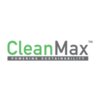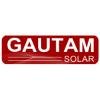Filter interviews by
GALAXY SOLAR ENERGY Service Engineer Interview Questions and Answers
GALAXY SOLAR ENERGY Service Engineer Interview Experiences
1 interview found
I applied via Naukri.com and was interviewed in May 2024. There was 1 interview round.
(1 Question)
- Q1. Types of inverter
- Ans.
Types of inverters include grid-tie inverters, off-grid inverters, and hybrid inverters.
Grid-tie inverters are used in systems connected to the utility grid.
Off-grid inverters are used in standalone systems not connected to the grid.
Hybrid inverters can operate in both grid-tie and off-grid modes.
Other types include microinverters and string inverters.
Interview Preparation Tips
Top trending discussions






Interview questions from similar companies

Senior Engineer Interview Questions & Answers
CleanMax Enviro Energy Solutionsposted on 14 Oct 2021
Interview Questionnaire
1 Question
- Q1. Technical questions, safety.
Interview Preparation Tips

I applied via LinkedIn and was interviewed before Nov 2020. There were 3 interview rounds.
Interview Questionnaire
3 Questions
- Q1. Your professional years ,field in which I had experience?
- Q2. Are you ready to take the challenge
- Q3. Core expertise & challenges faced till date ?
Interview Preparation Tips

I applied via Naukri.com and was interviewed before May 2023. There were 3 interview rounds.
(12 Questions)
- Q1. What are the lifecycle methods?
- Ans.
Lifecycle methods are methods that are automatically called at certain points in the lifecycle of a component in React.
Lifecycle methods include componentDidMount, componentDidUpdate, componentWillUnmount, etc.
These methods allow developers to perform actions at specific points in a component's lifecycle, such as fetching data after the component has been rendered.
They are used to manage side effects, perform cleanup, ...
- Q2. What are the advantages and features of react?
- Ans.
React is a popular JavaScript library for building user interfaces.
Component-based architecture for reusability and easy maintenance
Virtual DOM for efficient updates and performance optimization
JSX syntax for writing HTML within JavaScript
One-way data binding for predictable data flow
Support for server-side rendering for improved SEO
Large community and ecosystem with many third-party libraries and tools
- Q3. Difference between class and functional components?
- Ans.
Class components are ES6 classes that extend from React.Component and have state and lifecycle methods, while functional components are simple functions that take props as input and return JSX.
Class components are defined using ES6 classes and have a render method.
Functional components are defined as simple functions that take props as input and return JSX.
Class components can have state and lifecycle methods like comp...
- Q4. What are the Higher order components?
- Ans.
Higher order components are functions that take a component and return a new component with additional functionality.
Higher order components enhance the functionality of existing components
They can be used for code reusability and separation of concerns
Examples include withRouter from React Router and connect from React Redux
- Q5. What are the React hooks?
- Ans.
React hooks are functions that let you use state and other React features without writing a class.
React hooks were introduced in React 16.8.
They allow you to use state and other React features in functional components.
Some commonly used hooks are useState, useEffect, useContext, and useReducer.
Hooks are more flexible and easier to use compared to class components.
- Q6. What is the difference between contextAPI and Redux?
- Ans.
ContextAPI is a built-in feature in React for managing global state, while Redux is a separate library for state management in React applications.
ContextAPI is built into React, while Redux is a separate library.
ContextAPI is primarily used for managing global state in a React application.
Redux provides a centralized store for state management and follows a unidirectional data flow.
ContextAPI is simpler to use for smal...
- Q7. What are the semantic elements in html?
- Ans.
Semantic elements in HTML are tags that clearly define the content they wrap, providing meaning to both browsers and developers.
Semantic elements help improve SEO by providing search engines with better understanding of the content.
Examples of semantic elements include <header>, <footer>, <article>, <section>, <nav>, <aside>, <main>, <figure>, <figcaption>, <deta...
- Q8. What are the pseudo elements?
- Ans.
Pseudo elements are used in CSS to style specific parts of an element.
Pseudo elements are denoted by double colons (::) in CSS.
They allow styling of specific parts of an element, like the first letter or line.
Common pseudo elements include ::before, ::after, ::first-line, and ::first-letter.
- Q9. What is box model?
- Ans.
The box model is a fundamental concept in CSS that defines the layout of elements on a webpage.
The box model consists of content, padding, border, and margin.
Content: the actual content of the element, such as text or images.
Padding: space between the content and the border.
Border: a line that goes around the padding and content.
Margin: space outside the border, separating the element from other elements.
- Q10. What is hoisting?
- Ans.
Hoisting is a JavaScript mechanism where variable and function declarations are moved to the top of their containing scope during the compilation phase.
Variable and function declarations are hoisted to the top of their scope.
Only declarations are hoisted, not initializations.
Function declarations take precedence over variable declarations.
Example: console.log(myVar); var myVar = 10; // Output: undefined
Example: cons...
- Q11. What is difference between normal function and arrow function?
- Ans.
Normal functions are defined using the function keyword, while arrow functions are defined using the => syntax.
Normal functions are hoisted, while arrow functions are not hoisted.
Arrow functions do not have their own 'this' keyword, they inherit it from the parent scope.
Arrow functions do not have their own 'arguments' object.
Arrow functions are more concise and have implicit return.
Arrow functions cannot be used as co
- Q12. What is splice and slice?
- Ans.
Splice and slice are methods used in programming to manipulate arrays.
Splice is used to add or remove elements from an array at a specific index.
Slice is used to extract a portion of an array and returns a new array.
Example of splice: array.splice(2, 0, 'new element') - adds 'new element' at index 2.
Example of slice: array.slice(1, 4) - extracts elements from index 1 to 3.
Coding questions on Java script like array methods and objects handling. coding questions on React is like life cycle methods using functional components and state management.
(2 Questions)
- Q1. Why should we hire you?
- Q2. How do you handle the work?
Skills evaluated in this interview

I applied via Approached by Company and was interviewed in Jul 2023. There were 3 interview rounds.
(1 Question)
- Q1. Personal details and reasons for change
(1 Question)
- Q1. About my job profile, renewal sector and technical questions about my past experience.
(1 Question)
- Q1. With HoD and again technical questions were asked.
Interview Preparation Tips
- Contract Management
- Defect liability
- Warranty Management

Senior Engineer Interview Questions & Answers
CleanMax Enviro Energy Solutionsposted on 5 Oct 2023

(1 Question)
- Q1. About yourself and how many experience in SCM
(1 Question)
- Q1. Subscription materials details


(2 Questions)
- Q1. Basic ups inverter battery related questions
- Q2. Power Calculation

Interview Questionnaire
5 Questions
- Q1. What is Igbt ?
- Ans.
IGBT stands for Insulated Gate Bipolar Transistor. It is a power semiconductor device used for switching and amplifying electrical signals.
IGBT combines the advantages of both MOSFET and bipolar junction transistor.
It has a high input impedance like a MOSFET and a low on-state voltage drop like a bipolar transistor.
IGBTs are commonly used in applications such as motor drives, power supplies, and renewable energy system...
- Q2. How to test Battery
- Ans.
To test a battery, you can use a multimeter to measure voltage, perform a load test, and check for any physical damage or leaks.
Use a multimeter to measure the voltage of the battery. A healthy battery should have a voltage close to its rated voltage.
Perform a load test by connecting a known load to the battery and monitoring its voltage drop. A healthy battery should maintain a stable voltage.
Inspect the battery for a...
- Q3. What is Mosfet
- Ans.
A MOSFET (Metal-Oxide-Semiconductor Field-Effect Transistor) is a type of transistor used for amplifying or switching electronic signals.
MOSFET is a three-terminal device that consists of a source, a drain, and a gate.
It is made up of a metal gate electrode separated from the semiconductor channel by a thin insulating layer of oxide.
MOSFETs are widely used in various electronic devices such as computers, smartphones, a...
- Q4. Brown black red resistant
- Q5. Working and check process diode ,bjt ,mosfet
Interview Preparation Tips

I applied via Indeed and was interviewed before Mar 2022. There were 3 interview rounds.

(3 Questions)
- Q1. What is your name and where r u from
- Q2. Qualification,and working experience
- Q3. Why do you want to work in utl
(3 Questions)
- Q1. What is the resistance
- Ans.
Resistance is the opposition to the flow of electric current.
Resistance is measured in ohms (Ω)
It is caused by the interaction between electrons and the atoms of a material
Materials with high resistance are called insulators, while those with low resistance are called conductors
Resistance can be calculated using Ohm's Law: R = V/I
Examples of resistors include light bulbs, heating elements, and electronic components
- Q2. What is capacitor and diode
- Ans.
A capacitor is an electronic component that stores energy in an electric field, while a diode is a semiconductor device that allows current to flow in only one direction.
Capacitors are commonly used in electronic circuits to filter out noise and stabilize voltage.
Diodes are used in rectifiers, voltage regulators, and signal demodulators.
Capacitors are measured in farads, while diodes are measured in volts and amperes.
- Q3. What is the transistor
- Ans.
A transistor is a semiconductor device used to amplify or switch electronic signals and power.
It has three layers of semiconductor material: P-type, N-type, and P-type.
It can be used as an amplifier to increase the strength of a weak signal.
It can also be used as a switch to turn a circuit on or off.
Transistors are commonly used in electronic devices such as computers, radios, and televisions.
Interview Preparation Tips

I applied via Approached by Company and was interviewed before May 2022. There were 2 interview rounds.

(5 Questions)
- Q1. What is inverter
- Ans.
An inverter is an electronic device that converts DC power to AC power.
Inverters are commonly used in solar power systems to convert DC power from solar panels to AC power for use in homes and businesses.
They are also used in cars to convert DC power from the battery to AC power for charging devices.
Inverters come in different sizes and capacities depending on the amount of power they can convert.
They can be pure sine ...
- Q2. How we check a inverter current
- Ans.
Inverter current can be checked using a clamp meter or a multimeter.
Use a clamp meter to measure the current flowing through the inverter's output wires
Set the clamp meter to the appropriate range and clamp it around one of the output wires
Read the current value displayed on the clamp meter
Alternatively, use a multimeter to measure the voltage drop across a shunt resistor in series with the output wires
Calculate the cu
- Q3. Function of igbt
- Ans.
IGBT stands for Insulated Gate Bipolar Transistor. It is a power semiconductor device used for switching and amplifying electrical power.
IGBT combines the advantages of both MOSFET and BJT transistors
It is used in various applications such as motor drives, power supplies, renewable energy systems, etc.
IGBT has a high input impedance and low on-state voltage drop
It is capable of handling high current and voltage levels
I
- Q4. Color code of resistance
- Ans.
The color code of resistance is used to identify the resistance value of a resistor.
The color code consists of four or five colored bands on the resistor.
The first two bands represent the significant digits of the resistance value.
The third band represents the multiplier.
The fourth band represents the tolerance.
The fifth band, if present, represents the temperature coefficient.
For example, a resistor with bands of brow...
- Q5. Function of diode
- Ans.
A diode is an electronic component that allows current to flow in one direction and blocks it in the opposite direction.
Diodes are commonly used in rectifiers to convert AC to DC
They are also used in voltage regulators to maintain a constant voltage
Diodes can be used as a switch in electronic circuits
They are made of semiconductor materials such as silicon or germanium
GALAXY SOLAR ENERGY Interview FAQs
Tell us how to improve this page.
GALAXY SOLAR ENERGY Interviews By Designations
Interview Questions for Popular Designations
- Service Advisor Interview Questions
- Senior Service Engineer Interview Questions
- Customer Service Executive Interview Questions
- Service Technician Interview Questions
- Customer Service Associate Interview Questions
- Servicenow Developer Interview Questions
- Field Service Engineer Interview Questions
- Service Manager Interview Questions
- Show more
GALAXY SOLAR ENERGY Service Engineer Interview Process
based on 1 interview
Interview experience
Interview Questions from Similar Companies
GALAXY SOLAR ENERGY Service Engineer Reviews and Ratings
based on 1 review
Rating in categories
|
Site Engineer
11
salaries
| ₹2 L/yr - ₹3 L/yr |
|
Technical Marketing Engineer
6
salaries
| ₹1.6 L/yr - ₹6.7 L/yr |
|
Electrical Site Engineer
6
salaries
| ₹2.8 L/yr - ₹3.1 L/yr |
|
Project Engineer
5
salaries
| ₹2.4 L/yr - ₹3.4 L/yr |
|
Service Engineer
5
salaries
| ₹1.3 L/yr - ₹3.2 L/yr |

UTL Solar

Danfoss Power Solutions

LM Wind Power

Senvion
- Home >
- Interviews >
- GALAXY SOLAR ENERGY Interview Questions >
- GALAXY SOLAR ENERGY Service Engineer Interview Questions










